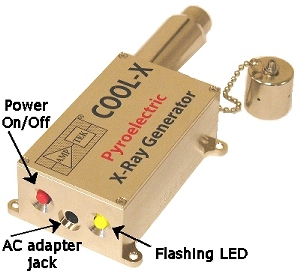Master IDP:
Understanding and optimization of a low energy X-ray generator for intra-operative radiation therapy
|
Master thesis/IPD: finished Advisors: affiliate Prof. Dr. Michael Friebe Supervision by: affiliate Prof. Dr. Michael Friebe and Philipp Matthies |

|

|
PDF of the thesis call
General project overview
The research activity is focused on the combination of minimal-invasive therapy techniques with diagnostic imaging and navigation modalities, e.g. application of intra-operative radiation therapy, MRI guided high focused ultrasound or intra-operative SPECT with MRI guidance.An initial development goal is to use advanced MRI imaging to find and localize small pathologies and subsequently perform minimal-invasive therapy with a small and lightweight X-ray generator and continuous intra-operative imaging for visualization and navigation.
To achieve the development of a usable system and procedure, a translational approach and close and intensive interdisciplinary collaboration is required between the clinical specialists (Surgical Oncology, Radiation Therapy, Radiology) and the technical faculties of Physics, Information Science and Medical Engineering.
Topic
The student will study and understand the dose distribution and biological effectiveness of the pyroelectric X-ray generator available, both in theory and experiments. He or she will tackle the following problems and questions with the aim of using this device for radiation therapy, ultimately inside the operating room:- Shape of the X-ray beam and how it can be manipulated
- Amount of radiation produced
- Required doses for the different radiation treatments of tumors
- Calculate time of radiation treatment needed
- Effects of the produced radiation on the tissue (breast, liver, kidney, …)
- Evaluation of different technologies on basis of MINIATURIZING possibilities (X-ray generation, dose distribution, estimated cost)
Requirements
Interest in X-rays and their medical applications and knowledge of “Biomedical physics I + II” lectures by Prof. Franz Pfeiffer and Prof. Jan Wilkens or equivalent.Supervision / Contact
This project is proposed and supervised by affiliate Prof. Dr. Michael Friebe (I16, CAMP, TUM) and Philipp Matthies. Working environment will be provided at IFL, Klinikum rechts der Isar, TUM, and TUM IAS, Campus Garching.| ProjectForm | |
|---|---|
| Title: | Understanding and optimization of a low energy X-ray generator for intra-operative radiation therapy |
| Abstract: | The research activity is focused on the combination of minimal-invasive therapy techniques with diagnostic imaging and navigation modalities, e.g. application of intra-operative radiation therapy, MRI guided high focused ultrasound or intra-operative SPECT with MRI guidance. An initial development goal is to use advanced MRI imaging to find and localize small pathologies and subsequently perform minimal-invasive therapy with a small and lightweight X-ray generator and continuous intra-operative imaging for visualization and navigation. An in-vitro setup will be created to apply the low-energy X-rays to real cancer cells and study their biological effectiveness. |
| Student: | |
| Director: | affiliate Prof. Dr. Michael Friebe |
| Supervisor: | Philipp Matthies |
| Type: | IDP |
| Area: | Computer-Aided Surgery |
| Status: | finished |
| Start: | 01.08.2013 |
| Finish: | |
| Thesis (optional): | |
| Picture: | /twiki/pub/Students/MaLowEnergyXray/xraygenerator.jpg |